You are sitting at the supermarket or staring at a menu and wondering which steak to order. We have you covered with everything you need to know. The most tender cuts of beef are the cuts the furthest away from both the horn (head) and hoof (feet) On the contrary, the toughest steaks come from areas of the shoulder and leg muscles. As you can imagine, these areas are used a lot and therefore contain more tough material.

Ranked from best cut of steak to worst are the Filet Steak, the Ribeye Steak, the Hanger Steak, the Porterhouse steak, the T-Bone Steak, the top sirloin, the strip steak, the bottom sirloin steak, the flank steak, the skirt steak and the round steak.
Once you get into the top 5 steaks, you will see many argue for their favorite. Sometimes it comes down to preference based on fat content, flavor, etc. We decided to make tie breakers based on cost per pound. We feel like this is fair and is based on what the total market believes is the best steak.
1. Filet Tenderloin Steak
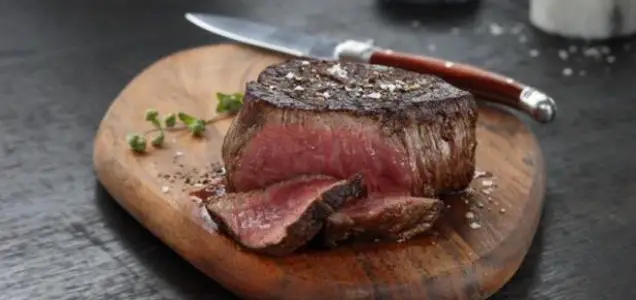
Coming in at #1 is the famous filet. There are different parts of the tenderloin that get cut into that filet. Usually, the most expensive and sought after is the center cut filet. There is only one of these per beef tenderloins. Our current index price for tenderloin steak is greater than $23 per pound.
The best of the best is the Filet Mignon. This particular part of the filet is cut from the very end of the tenderloin.
So why is the Filet the best cut of beef (and most expensive?) That is typically because it comes from a part of the cow that is tucked in next to the backbone. Because of this location, the tenderloin muscle isn’t used much for animal activity and becomes a very tender cut.
The tenderness of the filet makes it “melt in your mouth.” It also appears to be a clean cut of meat because it lacks fat (aka marbling) that causes some other cuts of of steak to have rich flavor.
2. Ribeye Steak
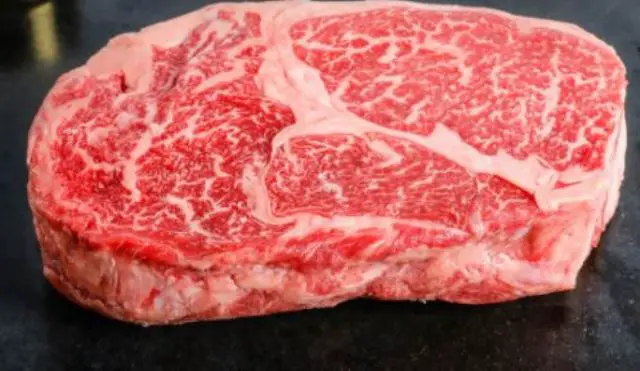
Coming in at #2 on the list is the ribeye steak. Many will question whether this should be #1 on the list, but we gave the nod to the Filet for its higher price. Essentially the market has spoken to give it the pole position.
Many steak fans will try to vote for the Ribeye over the filet because it is packed with flavor. Unlike the Filet, the Ribeye has tons of marbling (ie fat content) that makes it so appealing.
The Ribeye steak is another tender steak which traces its origins to the rib section of the cow. Given its proximity to the rib bones, the lack of movement makes this another tender cut. Some will also call this a Scotch Filet if it is cooked “bone in”
3. Hanger Steak
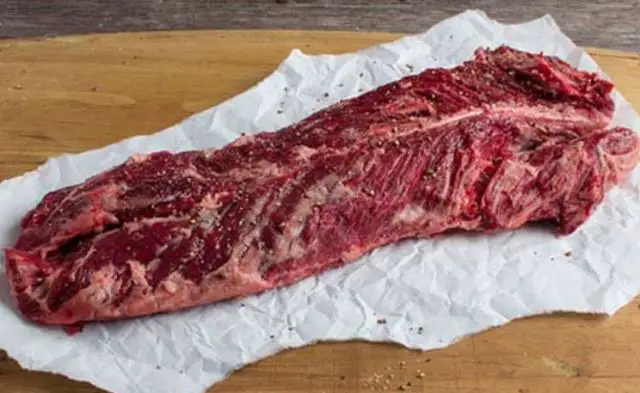
Coming in at #3 on the steak cut list is the Hanger Steak. You will often find this cut on menus at high-end steak houses, but you will rarely find it at the local Walmart, Publix or Kroger. The Hanger steak is a nice mix between the attributes of a Ribeye steak and tenderloin steak.
The Hanger steak hangs from the diaphragm close to the lower stomach. This is another cut that does very little work (see a trend here) which causes the tenderness seen in our first choices. It also has some marbling like the ribeye but a consistently good melt in your mouth feel like the filet.
Good luck finding a hanger steak in your local market. Because many shoppers aren’t used to this cut, it has become difficult to find. In fact, many butchers have been known to hold this cut back for themselves. Give it a try if you find it, and you won’t be disappointed.
4. Porterhouse Steak
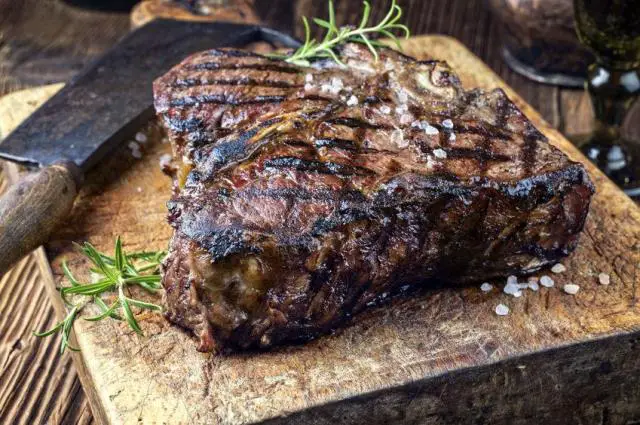
#4 and #5 on the list are very similar, but we give the nod to the Porterhouse steak because of its larger size. In fact, who would want a smaller steak? Not me. Not you.
The porterhouse is essentially two steaks that are separated by a bone. On one side of the bone, you have a tenderloin steak. On the other side of the porterhouse bone, you get the New York Strip (top loin).
Because the porterhouse comes from the hindquarter of the cow, it is tender, flavorful and lean. The tenderness is lower than the tenderloin (go figure with the name) but it also comes in with less flavor than the ribeye.
When cooked to perfection. the Porterhouse can be a real treat. That said, be careful given the lean nature because you could overcook it if you aren’t careful.
5. T-Bone Steak
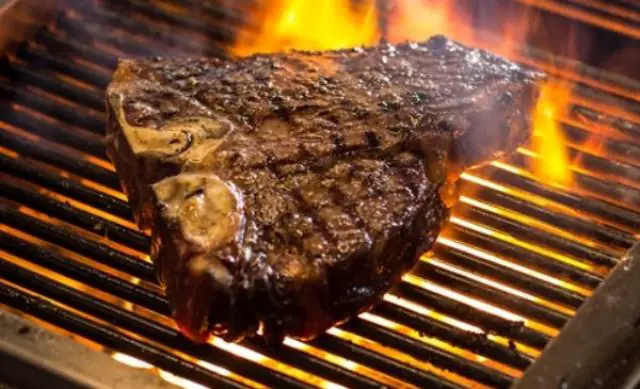
Coming in at #5 is the T-bone. The T-bone is very similar to the porterhouse but with less size. The T-bone is located on the left side and the Porterhouse is located on the tenderloin side.
Just like the Porterhouse, there are two different flavor profiles in the T-bone. On one side, you will get a filet. Once again, the filet is super tender, juicy and lacks fat content. On the other side, you get a sirloin on the other side.
One of the issues with this steak is that when cooking you are trying to figure out how to cook two different cuts of steak at the same time.
6. Top Sirloin Steak
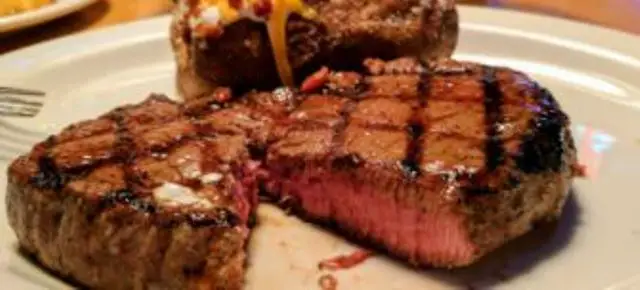
At most restaurants, one of the most cost-friendly steaks is the sirloin, but did you know there are two parts to the sirloin? Coming in at #6 is the top sirloin. You may have trouble guessing where this comes from, but it comes from the top part of the sirloin (rocket scientists impressed here)
The sirloin is not a super tender cut of meat, but the upside is that is tends to be less expensive than some of the other steaks higher on our list. Take more care with this cut if you are cooking at home and maybe even undercook it a little. This should help your steak from becoming too chewy.
7. Strip Steak
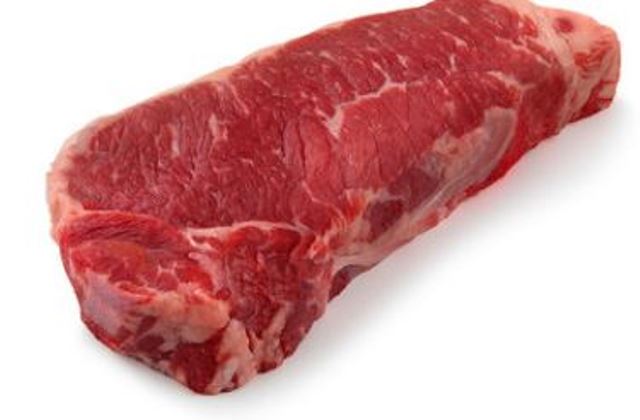
The Strip steak tends to take on different names in different parts of the country. The most common name is the New York Strip. The New York strip is located at the top of the cow’s body and is located near the sirloin. As mentioned above, the strip comes when you separate the Porterhouse Steak.
The New York Strip has tons of marbling which many people will argue drives up the cost of the steak. You may not even be able to eat the whole thing. That said, the marbling does add some nice flavor. Also, for those that don’t like the lean and “melt-in-your-mouth” tenderness, the strip provides a nice balance between these attributes.
8. Bottom Sirloin Steak
As you may be able to guess, our next steak comes from the same cut as another steak on the list. Coming in at #8 is the bottom sirloin steak. When the sirloin is cut up, there are three parts to the sirloin. There is the top sirloin (coming in at #6 on our list) and the bottom sirloin. The bottom sirloin is known to be the worst cut of the sirloin.
Many times, you will not see the bottom sirloin served as a traditional steak because of its quality. If you serve it like a normal steak, it is likely to not be very tender. There are some things that you can do to improve this steak. Consider mixing it with sauce, marinades or other additives. You will also see it sliced up in presentation as well. You can also use it in a soup or stew where the cooking method allows the sirloin to become more tender.
There is one more option if you want it as an inexpensive steak. If you are one of the people that cooks well done and throws ketchup (YUCK!) on your steak, maybe you can go this direction to save a buck!
9. Flank Steak
Coming in at #9 on the best cuts of steak is the Flank steak. This cut comes from the bottom side of the cow. Number 9 and 10 (skirt steak) come from similar areas of the cow and have similar toughness and flavor profiles.
Why did we rank flank steak over skirt steak? Well, it comes down to the fact that there is slightly more flavor to the steak. The steak is still pretty tough and lacks tenderness. We wouldn’t recommend using this as a traditional steak.
If you do decide to go with the flank steak, you will need to bring your A game when it comes to seasoning. With many of the steaks at the bottom of our list, the marinade and sauce also become the stars of the dish. Oh and one more tip, make sure you cut against the grain of the steak or the toughness will get even worse.
10. Skirt Steak
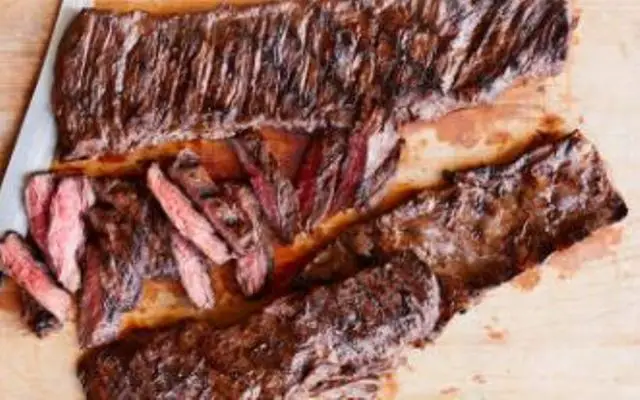
Comin in at #10 on the steak cut list is the skirt steak. The skirt steak, like the flank steak, comes from the underside of the cow (from the plate). Given its locations, it tends to be very lean, cotaining muscle fibers that are tough.
This isn’t a great form of steak, and you should take a lot of care when cooking. Like the flank steak, take care to pick a good sauce or marinade and try not to overcook. Cooking only to medium rare (not medium or longer) will help out with the results.
You can also try adding it into stew, soup or stir fry. You will also find this kind of meat in fajitas, so it isn’t a totally useless cut of steak.
11. Round Steak
Coming in at last and #11 on our list is the round steak. Remember that buying a steak that comes from an active part of the animal makes it tough and doesn’t make it an ideal piece of meat.
The round steak is the exact opposite of everything from #1 on our list (Filet tenderloin) It comes from the rump and rear leg. Just think about meat coming from the engine of a few thousand pound animal. The muscle is going to be used so much that you will struggle to get tenderness.
Like a few other steaks on our list (ie flank and skirt), the round steak (if you can’t avoid it) is best used in some sort of stew or soup. Even a kabob may work, but if you have a choice try to avoid the round steak.
Learning about Steak Qualities
Marbling
Marbling is the white fat that is intertwined within the muscle.
While super-lean cuts provide a great option for those individuals requiring a low-fat diet regimen, it’s also important to recognize that marbling greatly affects flavor. That is why the degree of marbling is one of the primary determinants in quality grade.
Steak Color
The steak (uncooked) should be bright red (similar to a cherry or red delicious apple). Over time, steaks exposed to air will start to turn brown.
If you are storing the meat to use later (ie ziploc or vacuum-packaged), the meat may begin to turn color. This doesn’t mean that it has gone bad.
Wet Aged Beef
Wet aging includes storing meat in sealed, airtight bags and refrigerated for up to 3 weeks (21 days).
Wet aging results in traditional beef flavor and is the most common aging method.
Dry Aged Beef
Dry aging is less common than wet aging due to the complexity and cost. Beef is stored uncovered in a refrigerated room under controlled humidity and air flow for up to 4 weeks. Dry aging results in distinctive brown-roasted beefy flavor.

